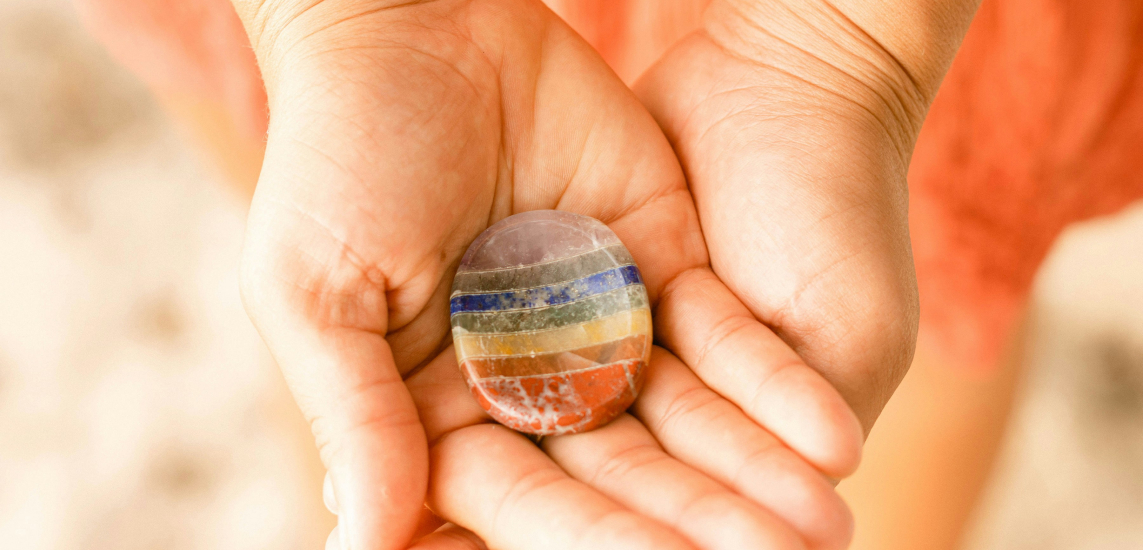Healing from a surgery or illness is not a linear journey — some days may feel harder than others. Fortunately, tools like meditation can support your healing and ease the difficult emotions that accompany the process.
In this blog post, you’ll discover a self-healing meditation designed to nurture your body and calm your mind. Join Julie Peters, one of Insight Timer’s beloved teachers, as she guides you in restoring balance and harmony within yourself. Follow along to reconnect with your body, release discomfort, and promote healing.
Inspiration behind the self-healing meditation for illness or injury
Julie Peters drew on her experience as a counseling therapist and energy worker to create this meditation. This meditation is influenced by Julie’s belief that the nervous system is interconnected with healing the physical body. She shares:
“The body already knows what to do and how to heal, we just have to remind it that it is supported. That’s what this meditation is about for me.”
An 11-minute self-healing meditation to rejuvenate your body and mind
This 11-minute guided meditation practice helps you rejuvenate your body and mind by working with the element of air and focusing on the breath. By following this practice, you can tap into the healing power of your breath to cleanse and soothe your energetic body, supporting your physical body’s healing.
For more guided meditations that promote healing and relaxation, explore ourlargest library of free guided meditations.
Self-healing guided meditation script
Step 1: Prepare your body and mind
Begin by finding a comfortable position, either lying down or sitting in a relaxed posture. Close your eyes if it feels right, or simply soften your gaze. Take a few deep breaths, allowing your body to adjust and settle. Feel free to move around as needed, fidgeting until your body finds a state of stillness that feels right.
Julie emphasizes that “not all meditation is the same: For some people with trauma, stillness meditations or attempting to control the breath can actually exacerbate stress.” Her guided meditations are designed with “lots of space and options” so that each person can meet their inner world with gentleness and compassion.
Step 2: Connect with the earth beneath you
Acknowledge the support of the earth beneath your feet or the surface you are resting on. Allow your body to sink and rest fully, using as little effort as possible to hold yourself up. If you are lying down, let yourself fully relax into the ground.
Step 3: Begin to notice your breath
Start to observe the natural rise and fall of your breath. With each exhale, allow your body to relax more deeply into the earth. Feel the connection between your breath and the ground, letting each exhale soften and calm your body.
Step 4: Visualize the healing light
Imagine the air around you filled with a bright, comforting white light. This light is the essence of healing, generated by the love and joy in your life. Think about something or someone that brings you happiness – a loved one, a pet, a favorite place, or even a cherished activity. As you dwell on these thoughts, the light brightens and surrounds you, enveloping you in its healing embrace.
Julie explains:
“The white light is a very simple and classic image that many people associate with healing. The color doesn’t matter so much as that the meditator is aligning themselves with an energy of calm, healing, support, maybe love and spirit.”
Step 5: Inhale the healing light
As you breathe in, imagine drawing the healing white light into your body through your nose, filling your lungs, bloodstream, and bones. With each exhale, you release what is not needed — tension, discomfort, or negative energy. Focus on the inhalation of light and allow the exhalation to be long and relaxed.
Step 6: Direct the light to areas of need
Now, focus on a part of your body that needs healing. This might be where you feel pain, discomfort, or the effects of illness or injury. With each breath, direct the healing light to this area, letting it soothe and repair the tissues, reconnecting and realigning what may be out of balance. Release any residue of discomfort with each exhale, allowing the light to work its magic.
Julie reminds us:
“The body already holds all the keys to healing that we need. We sometimes just need to slow down enough to listen to it and let it know we’re on its side.”
Step 7: Listen to your body
Take a moment to ask this part of your body what it needs. Listen carefully: Your body may or may not respond, and either outcome is fine. Simply remain open to whatever arises.
Step 8: Move to another area of your body
When you feel ready, shift your focus to another part of your body that may need attention. Repeat the process: Breathe in the healing light, direct it to the area of discomfort, and release what is not needed with each exhale. Continue this process, moving to a third area if it feels right. Allow the healing light to fill you with warmth and love.
Step 9: Reflect on your experience
Take a moment to bathe in the healing light. Allow yourself to rest in this peaceful state, feeling the light’s gentle embrace. When you are ready to conclude the meditation, take one last deep breath and consider stretching gently as you begin to reawaken your body. Honor any requests your body may have made during the meditation, and take action on those that feel safe and appropriate.
This guided meditation script was adapted from Julie Peters’ self-healing meditation for illness or injury, which you can find here.
Tips for beginners from Julie Peters
If you’re new to this type of meditation, Julie suggests not putting pressure on yourself to achieve any specific outcome. She advises:
“Let the words flow over you and trust yourself and your body’s inner knowing.”
The key is to allow the meditation to bring your body’s natural healing abilities to the surface without forcing anything.
Take a moment to reflect
Reflect on your experience to solidify any insights. Consider journaling about the following questions:
- How did the healing light feel as it entered and moved through your body?
- Were there any areas of your body that needed more attention or healing?
- Did your body communicate any specific needs or messages during the meditation?
- How can you incorporate this practice into your daily routine to support ongoing healing?
Taking time to reflect on these questions can deepen your meditation practice and help you maintain a connection with your body’s healing.
Why Julie Peters loves meditating with Insight Timer
Julie believes Insight Timer is perfect for new meditators. She shares:
“I love that it’s a simple platform that introduces people to guided meditation, which can be so much more effective and comfortable for many people than a self-led quiet meditation practice (though that has benefits too, of course!).”
She also enjoys the platform as a personal resource, admitting that she listens to her own sleep meditations to help herself drift off to sleep at night.
If you enjoyed Julie’s self-healing meditation, explore more of her work on Insight Timer. Julie also offers meditations focusing on energy work, mental health, and sleep.
Enhance your healing journey with Insight Timer’s free meditation app
Support your healing journey with Insight Timer’s free meditation app. With access to a vast library of free guided meditations, meditation music, sound healing, and more you can cultivate a consistent practice that nurtures your body, mind, and spirit.Looking to connect with other meditators to support your journey? Insight Timer offers one of the largest online meditation communities, with the option to join of our 25,000+ groups.







